Like so many vehicles created in changing or troubled times for their manufacturer, the Morris Marina was intended as a stopgap model. It was meant to last only four, maybe five, years and was aimed squarely at the conservative “Repmobile” class of buyer in the U.K. Instead, it lasted almost fourteen years and became symbolic of the British Leyland’s 1970s tribulations.
More than 1.1 million Marinas (and Itals) were ultimately sold, which would make it a success by most measures. But the car’s reputation for lackluster quality, a humdrum driving experience, and transparently penny wise but pound foolish cost cutting measures made it the butt of jokes for years.
Actual experiences vary, and any car that sells in that number is going to have fans; and had early planning and later circumstances not collided so unhappily, things might have been different for the Marina.
The particular Marinas you see here are some of the rarest – they are U.S.-spec Austin Marinas, part of British Leyland’s vain effort to maintain and grow North American sales, which would hopefully improve economies of scale on the car in Britain.
Americans (and Canadians) largely ignored the Marina, which looked like a Toyota but had all the perceived reliability of an MG, and could only be enticed to by 23,000 of them in three years of attempts. The Marina departed the states at the end of 1975 and lingered in Canada into 1978, but it was never much of a market force.
Target: Cortina
The Marina owed its existence to two other cars – Ford’s enormously popular Cortina MkII and British Leyland’s own Maxi. The Cortina’s popularity spoke for itself, but it was a series of baffling decisions about the Maxi that ultimately gave rise to a conventional Cortina competitor from BL.
Before British Leyland even existed, the Maxi (ADO14) had been in the pipeline for several years. It was a proper Euro mid-size five-door, front-drive hatch and using lessons gathered from the Mini, 1100/1300, and 1800 “Landcrab.” It would be aimed at the 1.5-1.8L class and squarely at the advanced Renault R16 and in addition to a new platform, it also used new engines (the “E” series).
But rather than giving it an all-new look, BMC/BL management under George Harriman decided to recycle the doors from the larger “landcrab” cars to save money, which made the Maxi look like one more version of the older car. It also meant that a conventional three-box sedan was impossible thanks to the huge wheelbase.
So it was that BL could not use the Maxi to compete with the Cortina sedan. It was also felt that the growing “company car” segment in the U.K. didn’t like front-drive anyway. This market (where companies provided white-collar or traveling workers with cars as a part of compensation) had not been interested in the best-selling 1100/1300 (ADO16) because of their added complexity.
Thus even before the long-delayed Maxi went on sale, in April of 1968, BL began working on a stopgap rear-drive mid-size for the same market segment and specifically gunning for the MkII Cortina, even though it would be replaced by the MkIII in 1970.
At first, the project idea was for an Escort rival based on a reworked Morris Minor, but with the 1100/1300 selling very well, the Cortina was a much more lucrative target, but also one that would be harder to hit.
Even in the halcyon days of 1968 when British Leyland was new and exciting, resources were thin and the pipeline from BMC (apart from the Maxi and Mini Clubman) virtually empty. But in several respects, there were some good cards in the hand BL was holding. For one thing, the Cortina MkII’s lead stylist, Roy Haynes, had come to BMC in 1967.
It was Haynes who led the style efforts on the Marina, although Pininfarina and Michelotti also submitted proposals for the new car. Harry Webster oversaw the engineering. The two disagreed on using “platform architecture” across multiple models as Ford had done in the 1960s, but then, the emphasis was on short-term for the Marina.
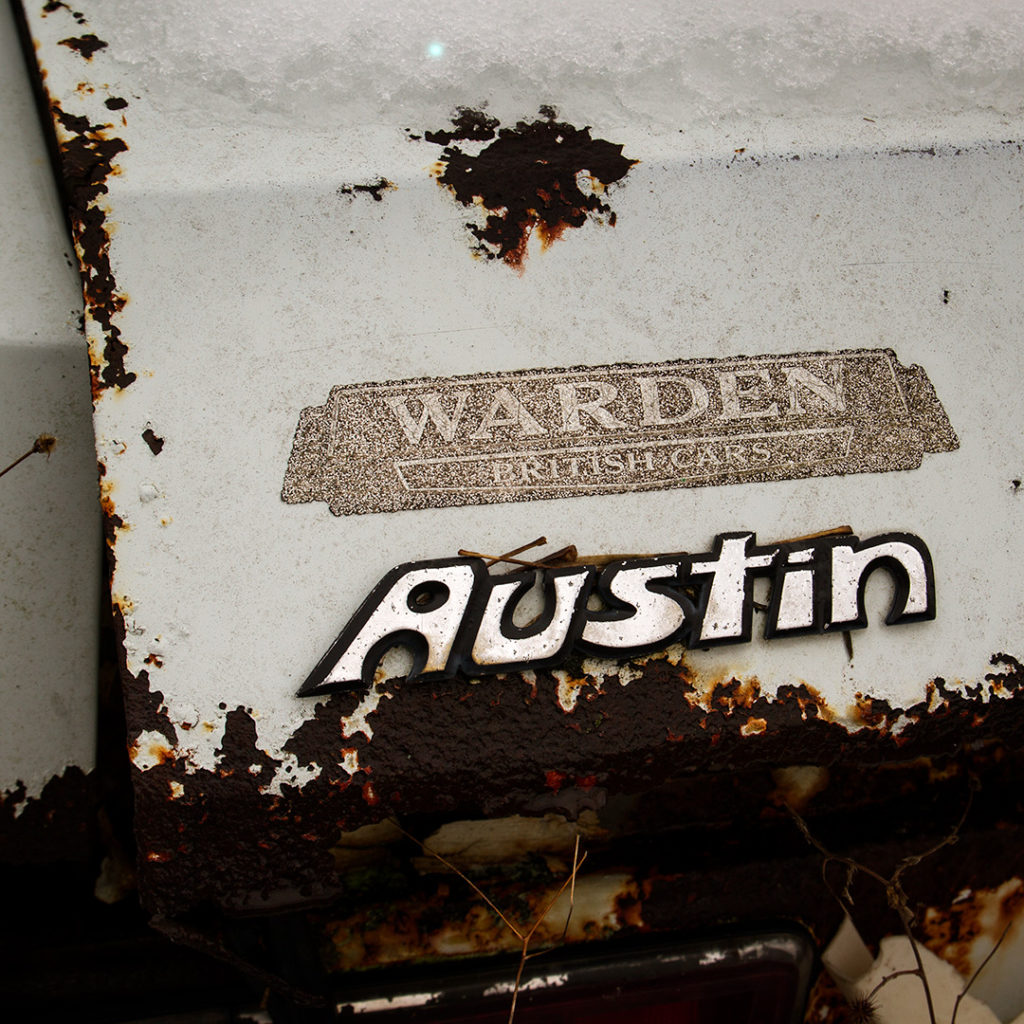
The car was to be built around as many existing components as possible to keep the development time short and the costs as low as possible – BL needed profits to fund the pipeline of new cars that were to emerge in 1974/5. The car had to be completed by the Earl’s Court show in 1970 by dictat of BL’s new chief, Donald Stokes, which further compressed the timeline.
Originally meant to use the E-series, the old A- and B-series engines were used instead. That made for easy compliance with international emissions laws (as in the USA and Australia), but also meant more design time and money had to be spent reworking the engine bay. The gearbox came from Triumph. Some steering components came from the ADO16. The rear suspension was simple leaf springs as on the MGB and numerous other older BL cars.
Very little was actually carried over from the ancient Morris Minor, but the front lever arm suspension was – which came back to haunt the car later.
As development went on, the budget grew tighter and more cuts had to be made. That’s why the 2-door fastback Marina, originally conceived as a rival to the Ford Capri, ended up using the doors of the four-door sedan. These decisions saved money at the time but hurt the car later.
The Marina Arrives
There was one more advantage at the time of the Marina’s launch – Ford’s MkIII Cortina was appreciably larger and heavier than the MkII. That meant the Marina, benchmarked on the MkII, slotted nicely between the Mk1 Escort and the MkIII Cortina.
The cost-cutting decisions, particularly the front suspension, were immediately seized on by the British press, which gave the Marina rather harsh reviews that stayed with it for the rest of its days. In sales terms, however, the Marina was spot-on. Production began in early 1971 and by March of 1972 more than 100,000 had been sold, despite huge amounts of production time being lost to strikes.
The most egregious deficiencies related to the pre-production cars’ heavy understeering tendencies. These were partially remedied by modifying the old suspension with more camber and relocating the lower arm of the front suspension; but it remained a so-so handler.
It was right in terms of space and spec, but it wasn’t a great driver or much to write home about in terms of style. But it was only intended to last into 1974/5 before being replaced with something more modern. But very quickly, economic circumstances began to conspire against the car, as did the car’s “cheap” feel and questionable quality.
The quality issues were attributable to labor unrest, which got progressively worse in the 1970s but were particularly bad in 1972/73 following the 1972 Miner’s strike, which many workers sympathized with. Economic conditions were also tough following the “Nixon Shock” and the collapse of the Bretton Woods system.
Indeed, it was the latter that caused many of Britain’s inflation problems in the 1970s – which of course made worker’s wages a constant issue and battle.
The Heath Government’s attempts to control pay raises were severely hurt by this rapid inflation – and the mishandling of the miner’s strike meant every other Union wanted wages that kept pace with inflation. They wanted plenty of unreasonable things too.
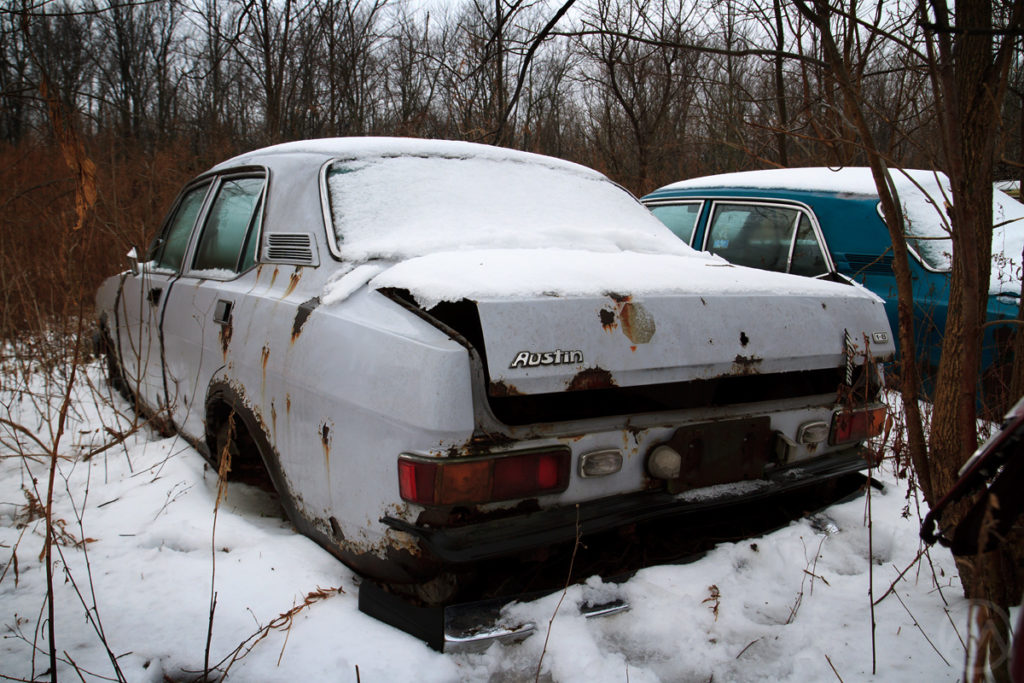
The Marina itself was built on a complex assembly line in an aging factory (Cowley) that required a road overpass for complete assembly, which didn’t help matters.
The overall market for cars grew considerably in the early 1970s, but BL’s slice of it continued to shrink – that prevented the company from developing any kind of proper Marina replacement, and because more cars were needed for domestic consumption and days and weeks were lost to strikes, fewer cars were exported. Into the void both at home and abroad came Japanese cars, which were just as rust prone but better assembled.
The Austin Marina
In the U.K., the Marina the core of the Morris brand in the 1970s, following an early BL edict that Austin should concentrate on front-drive and technology, while Morris should be traditional.
In the USA, however, Austin was the brand that had all the cachet. It was Austin that had been the most successful British family car brand in the USA in the 1950s, Austin-Healeys were still popular years after the make had ceased, and it was Austin on which ADO16 marketing efforts were concentrated in 1969-71.
In the wake of the British Leyland merger, it was also Austin around which the dealer network – a patchwork of specialist shops and larger dealers who sold sports cars as a sideline – was organized. Thus the very “Morris” Marina would wear an Austin badge when imported to North America.
The car was launched in Canada in the spring of 1972 and in the fall (as a 1973 model) in the USA. Early reviews weren’t so promising. The press launch happened in Florida, which was a place where vinyl seats might induce sweat; and while the car got good marks for braking and handling, it also drew criticisms for poor fit and finish. The New York Times’ reviewer had a door handle come off in his hand.
Ads were keen to stress the family relationship to other British Leyland vehicles like the V12 E-type and Land Rover, and also the cars’ closest stateside relative – the MGB. In North America only the 1.8L Marina was available, sharing its B-series with the MG but using only a single carb instead of the MGB’s twin SUs. There were some internal differences too.
Effectively the 2-door Marina GT was like a bigger, heavier, less powerful MGB/GT; but it was bigger inside and resembled the kinds of two-door products offered by Toyota and Datsun, but with a less sophisticated engine. Many tape stripes and appearance options were offered but like the more sedate looking Marina sedan, the GT was a slow seller.
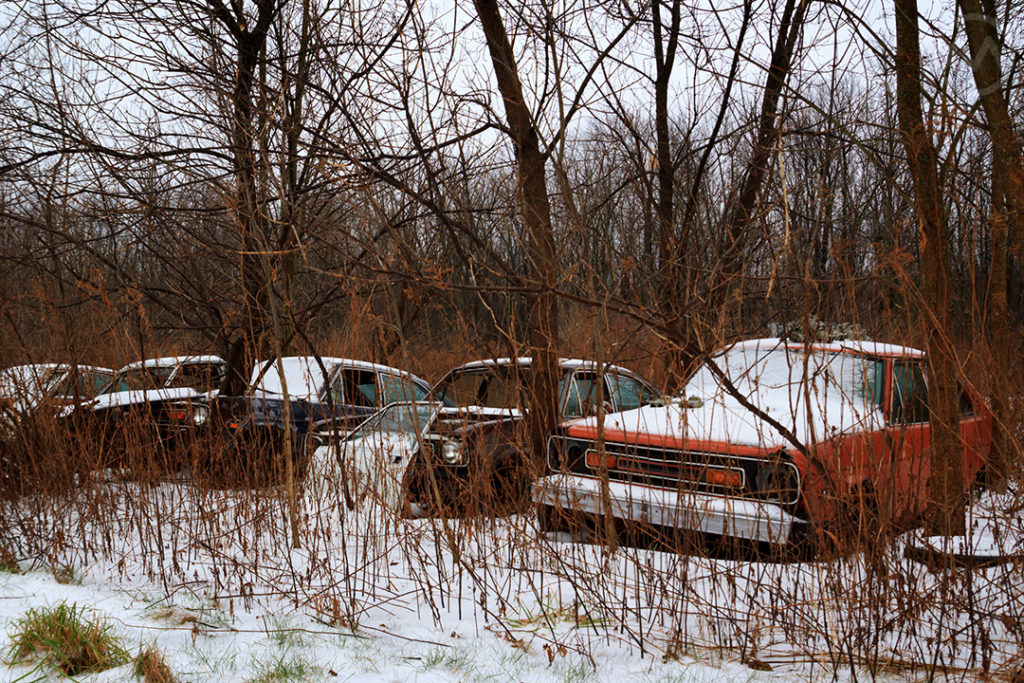
Considerable effort had been made to make sure the Marina was U.S. compliant, money that could probably have been better spent elsewhere; but BL was determined to try and sell the cars there.
By 1975 they were sold mostly by steeply discounting them – just $2,500 would buy you a new one in that final year (and the Marina’s best in the USA, though sales were still tiny). These huge discounts led to an accusation of dumping cars below cost, an allegation later levied against Lancia for similar discounts.
In other export markets, particularly Australia and New Zealand where the cars were manufactured locally, the Marina (labeled Morris, then Leyland) did much better. Australia in particular used a front subframe to create a unique six-cylinder variant – the 2.6L Marina Red Six, possibly the best of all Marina variations and certainly the most powerful at 121hp. Australia and New Zealand also got the OHC E-series engines far earlier than the U.K. (h/t to reader Graeme Roberts).
The Lean Years
By 1975 there was no replacement on the horizon for the Marina and British Leyland was reeling from strikes and a general downturn in the U.K. economy. A planned replacement, codenamed ADO77, never got beyond the prototype stage.
By the beginning of the year, British Leyland’s many corporate problems and missteps had, combined with the worsening economic conditions, gotten the company to the point where it had to be partly nationalized and restructured. In such an environment many projects were abandoned and ADO77 was far too close in size, cost, and purpose to the new front-drive “Princess” models that were new that year.
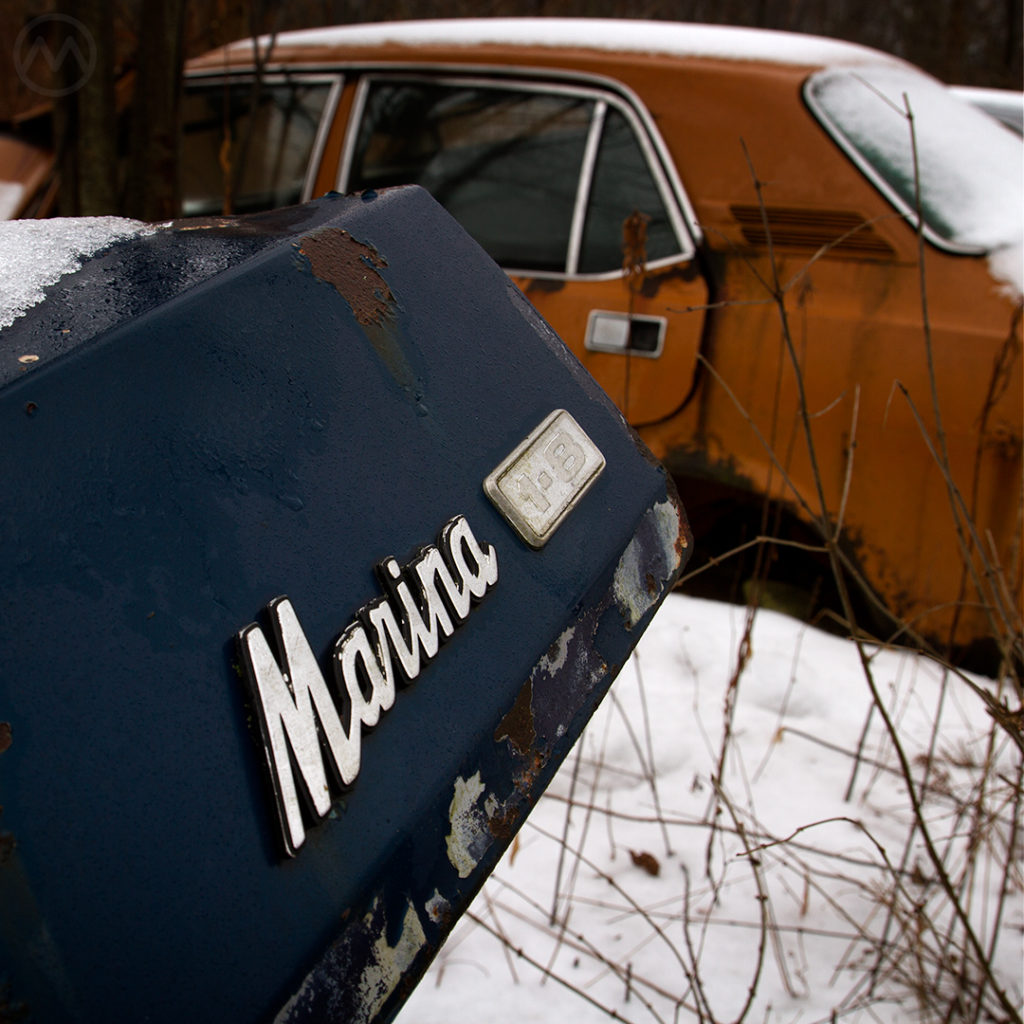
As such, the Marina was forced to carry on – what should have been a stopgap was mildly facelifted in 1975, then updated in 1977 with a diesel variant and, a year later, with the OHC O-series four. Though never seen in North America, there were also popular pickup and van versions that were popular as service fleet vehicles.
In 1980, BL enlisted the help of ItalDesign to facelift the Marina one more time – into the slightly more aerodynamic looking Ital; but by then it was a very dated car.
These shots are several years old now but were produced with the help of Ben Jacob of British Auto Salvage. One of these shots was also featured in Practical Classics in early 2017.

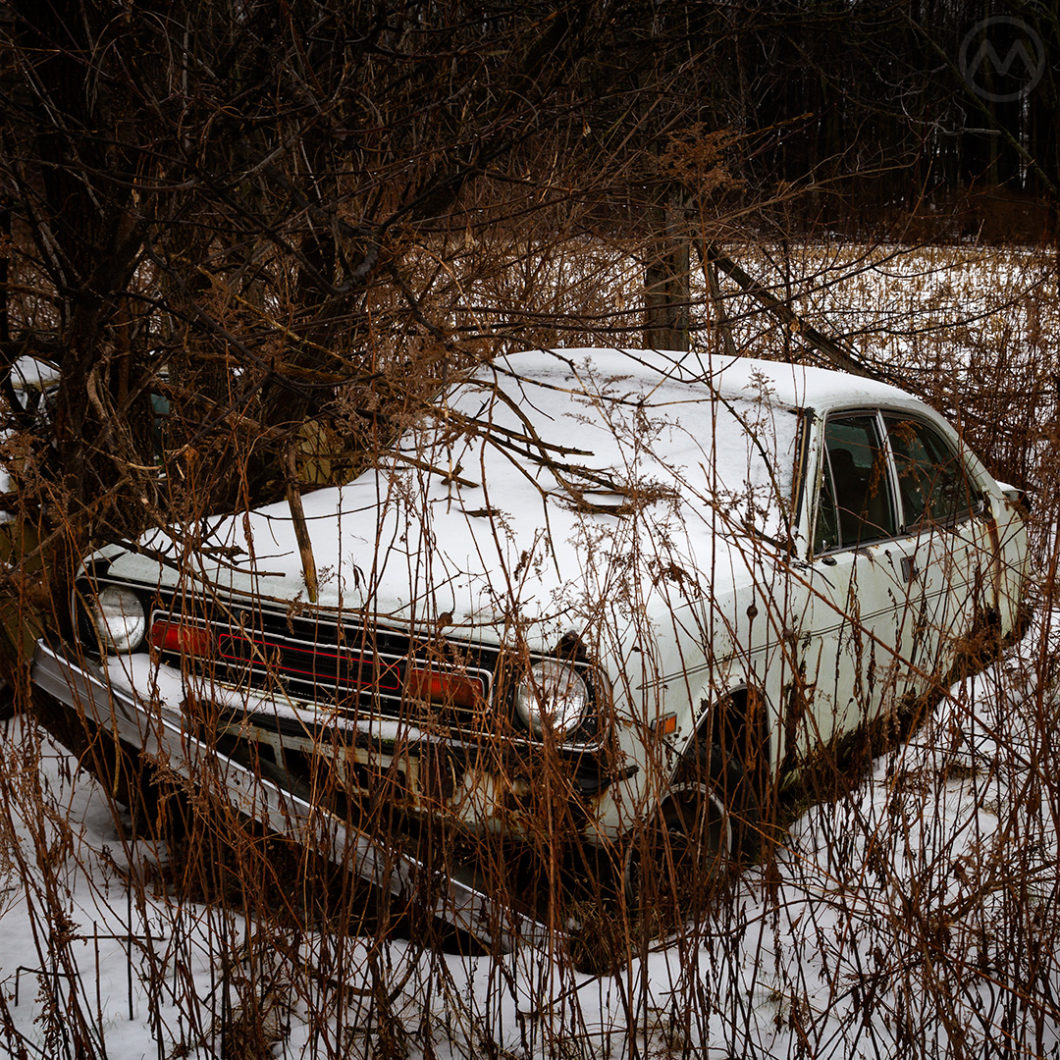
Excellent article. However, I think you might have missed the fact four cylinder Australian Marinas, which were also assembled in New Zealand, actually used the Maxi’s 1500 and 1750 E-series OHC engines, not the A- and B- motors in the English made models.
loved my Marina…quick and reliable, it was….
My mother’s first car was an Austin Marina. By all accounts, it was a car that existed.